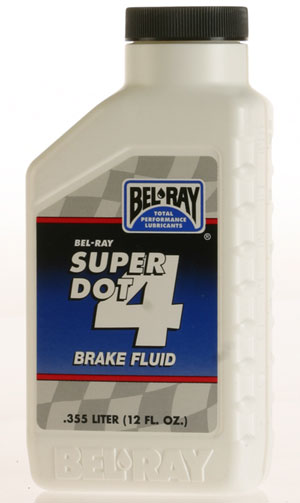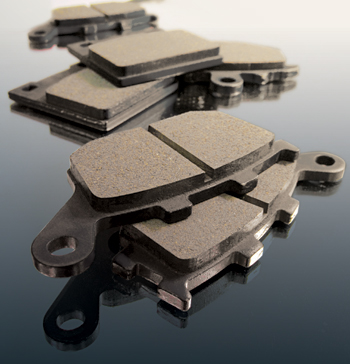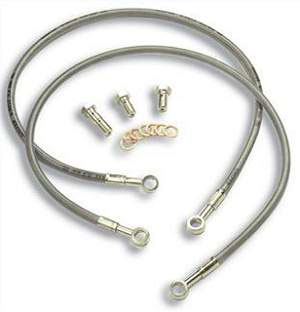Ask the Editors Week of June 27 2011
By: ATV Connection Editors
Hello ATV Connection readers! Here’s your chance to get some expert advice from our crack editorial staff. If you have an ATV related question, create a forum account (if you don’t already have one) then start a new thread in our Ask the Editor section. It’s easy, informative, and fun!
So, without further ado, here is this week’s question…
Dear ATVC: Picked up a Honda TRX450R this year that ran great but needed new rear brakes. I wanted to freshen up the fronts as well, any tips? Also some riding buddies of mine said modern 4-strokes don’t go through brakes like older ATVs used to. Is there any truth to this?
We’ll start by addressing the claims of your friends. If by “older ATVs” they are referring to 2-stroke powered machines, indeed there is some truth to the fact that 4-strokes inherently offer additional speed scrubbing that doesn’t require your brakes in the form of “engine braking” each time you let off the throttle.
As a result, while 4-stroke equipped ATVs have actually gained weight over their 2-stroke counterparts, the fact that braking duty is divided between the brakes and the compression of the very engine itself, brake life is actually increased.
As far as freshening up your front brakes is concerned, absolutely; the following tips should apply to your situation as well as universally to anyone considering updating their brake components due to decreases in performance.
Bleed ‘em
Even perfectly functioning brakes gather performance robbing air bubbles in the lines. Removing these air pockets is a fairly simple process and works wonders in restoring spongy brakes.
Tutorials abound online should you be unsure of the proper brake bleeding method, but as a general rule we use the tried and true practice of pumping up the brake, cracking open the caliper’s bleed nipple, letting the air escape (often with some fluid), closing, & repeating.
Fluid Refresh
With hydraulic disc brakes, the first place to begin looking for increases in performance should be the brake fluid. It is fairly inexpensive, easy to replace, and handles a large responsibility in the process of brake function. Remember that brake fluid absorbs water from the very air around us the moment the bottle is opened. Always replace from a brand new bottle and don’t be overly concerned with saving any unused fluid on account of this fact.
Also check your machine’s owner’s manual (and if worst comes to worst, it should be engraved in the ATV’s master cylinder cap) to find out the specific Department of Transportation number grade of the fluid you should be running. Most modern ATVs work great with DOT 4 but every now and then we encounter an ATV that demands 3 or 5.
Don’t forget to properly bleed the lines once you’ve replaced the fluid.

Lilly Pads
Check the pads. If the brake pad material is visually worn down compared to new, don’t wait until you reach damaging metal on metal contact before replacing. Remember that as the space between the pads and rotor increases, more pressure is required to make contact at the lever. This is a leading cause for the spongy feel in grabbing a handful of brake to scrub off speed on a well-worn brake system.

Rotor Rooter
If your pads still have life left in them and the brakes have fresh (and properly bled) fluid, the rotor itself could be the cause for decreased performance. Unlike the automotive world, ATV brake discs rarely warp (indicated by the feeling of pulsating pressure when applied). They do however get scored, grooved, pitted and glazed. Any one of these factors can greatly diminish the brake pad’s ability to get good purchase.
The best option is to simply replace the rotor with a new unit; however, we understand, times are tough, and if there is any way to save a few bucks, it’s a way worth looking into. Before tossing the old rotors to start anew, grab a piece of 600 grit sand paper and a sanding block and gently work over the rotor’s surface to remove these blemishes and increase the tackiness of the disc.
Resurfacing your disc is hit or miss, but it’s usually worth the effort before sinking good money on a brand new unit. Remember however that if the disc is warped (wavy) or grooved thanks to metal-to-metal contact with the pads/caliper, toss it and get a new one. There’s no salvaging such damage. Even if you could get more life out of the disc, it would only eat up brake pads at an alarming rate.

Getting Hosed
Last but certainly not least is checking over your ATVs brake lines. We’re as guilty as the next at neglecting these rubber tubes, but truth be told: they are as critical an element of the system as any. If they show signs of cracking or splitting, trashcan them immediately and replace with fresh lines. By the time fluid starts to seep through, the pressure that makes a hydraulic brake work has been compromised. If you’re going to be replacing anyway, consider upgrading to much stronger/longer lasting steel braided lines. They typically don’t cost too much more than standard rubber hoses but the performance/longevity gained is substantial.

Do you have a question? Submit it by clicking here!
